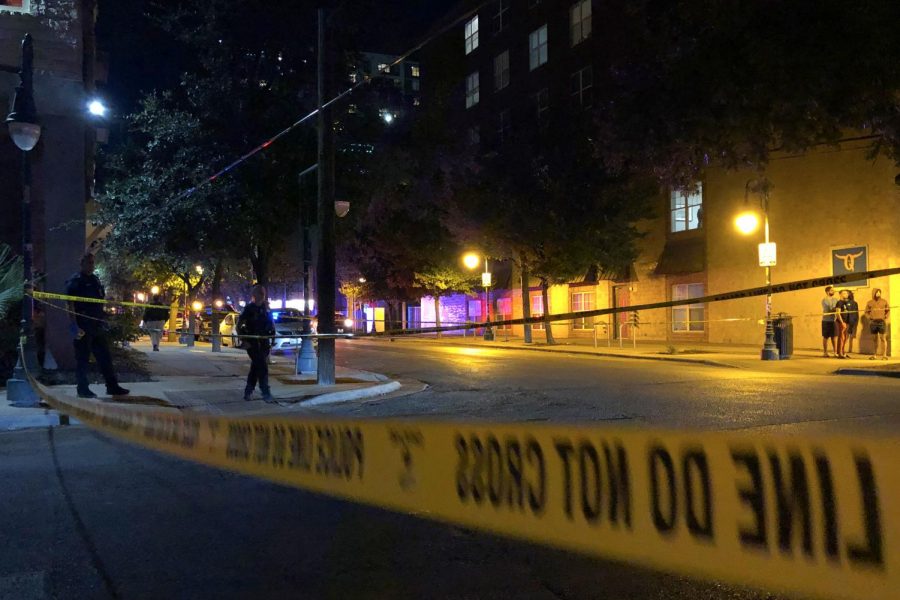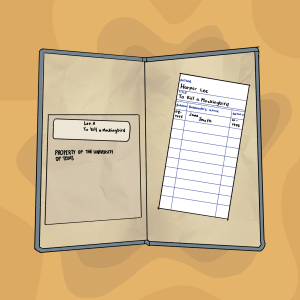UTPD plans long-term improvements to West Campus safety following shooting, other incidents
December 15, 2021
Editor’s Note: This article first appeared as part of the November 16 flipbook.
UT administration and the University of Texas Police Department announced Nov. 4 a plan to improve safety measures on and off campus following a week of multiple incidents, which caused uncertainty among students living in West Campus and surrounding areas.
Students received notices of five separate incidents occurring around campus during the first week of November. UTPD notified students early on Nov. 1 about a shooting before midnight Oct. 31 at 21st and Pearl St. that left a non-UT affiliated man hospitalized, according to previous reporting by The Daily Texan. The same week, UTPD sent out notifications about a terroristic threat arrest, a student robbed at gunpoint, an unspecified incident and a false report of shots fired.
President Jay Hartzell released a statement Nov. 1 saying that UTPD would increase patrols in West Campus and work with the Austin Police Department and the Texas Department of Public Safety to enhance safety in the area.
Hartzell said these efforts will build on an $8 million grant the University received in 2020 from the UT System Board of Regents. So far, the University has used the grant money to create a new UTPD district in West Campus, hire 11 additional officers and two sergeants, install more security cameras and open a new police office in the area, according to the statement.
Don Verett, acting assistant vice president for campus security and acting chief of UTPD, sent out a campus-wide email Nov. 4 stating that UTPD would partner with University leadership to come up with long-term safety measures beyond increasing patrols.
Following the increase in incidents, a minimum of three to four UTPD officers and a supervisor are patrolling West Campus at all times with their white alley lights on to better light the streets, Verett said in an email. Verett said the Department of Public Safety and APD also patrol the area and UTPD is paying its officers overtime to increase patrols.
Verett said in an email that he believes an increase in the population density and high-rise buildings might be contributing to increased reports as there are more people around to witness or report suspected crime.
“(Hartzell is) looking to the police department to provide those details,” Verett said in an interview with KXAN. “A lot of the things we’re doing are short-term fixes right now.”
University spokesperson Eliska Padilla said University administration and UTPD are still in the process of creating a plan for long-term solutions, but the community will be notified of any developments promptly.
Some students say they would like to see changes to the incident notification process.
Pablo Pratt, an information security and privacy graduate student, said he dealt with a lot of misinformation on the night of the shooting, so it would be helpful if UTPD developed a system to verify or deny information.
“It’s scary how fast misinformation can spread and, obviously, these are students who are really concerned, (but) it’s hard to fact check everything in the moment,” Pratt said.
Pratt said his sister was at the Perry-Castañeda Library when the Oct. 31 shooting occurred. He said he wanted to try to help her, but did not know the severity of the situation since people reported gunshots in multiple areas.
“She’s in the PCL, and me driving down there is putting me at risk and also her at risk,” Pratt said. “With the mix of cops and shooters on the loose, (and) not knowing the proper information can turn really messy really fast … As much as I want to help, the best thing I can do is stay home and send her information and check up on her constantly.”
UTPD confirmed on Twitter the afternoon of Nov. 1 that some reported gunshots were fireworks.
Noah Krivi, the vice president of student organization Horns for Safety, a group that identifies and advocates for student safety concerns, said he thinks the incident notification system needs more clarification about the level of threat from a given incident.
“As students, it’s important that we’re given information to make decisions on where we want to place ourselves,” Krivi said. “You can still get to class during a non-threatening event, or maybe you were in that area and you walk around it, versus if there was an active shooter, you would stay home.”












